

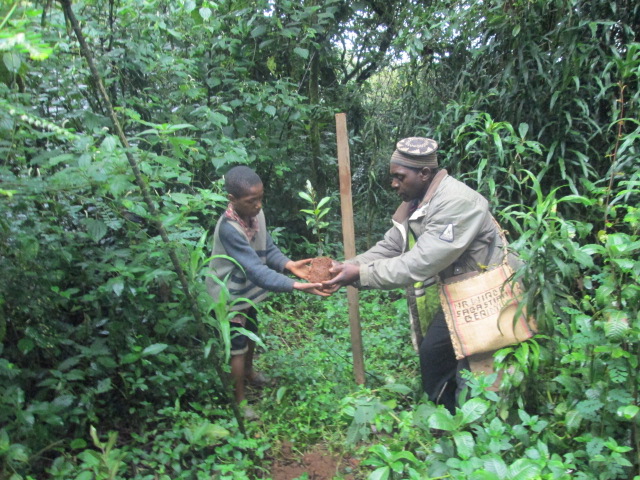
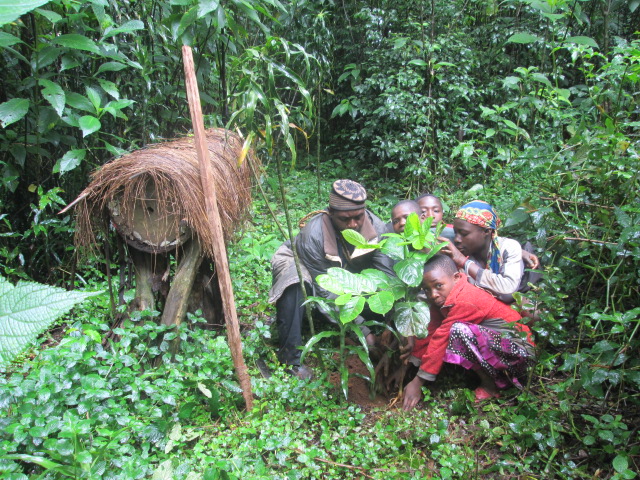
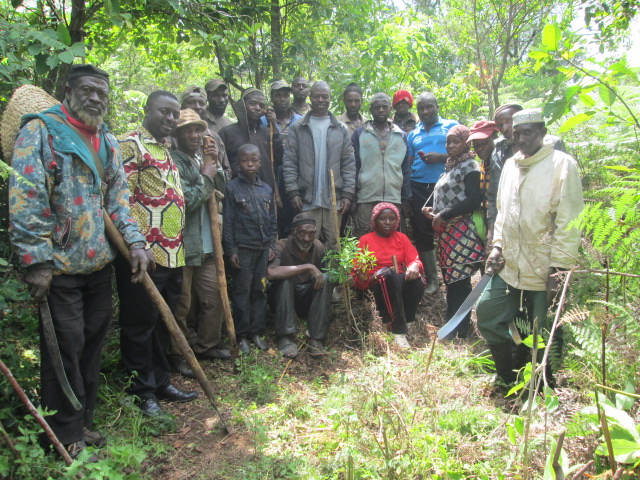

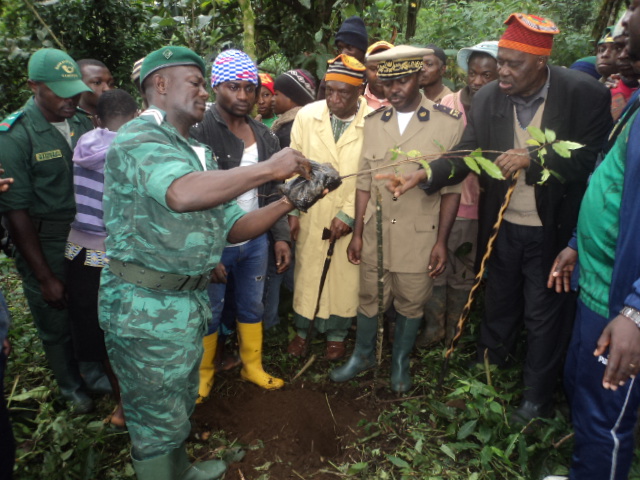

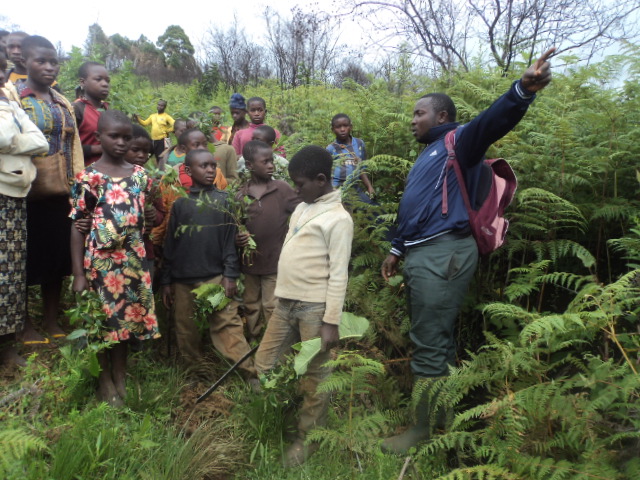
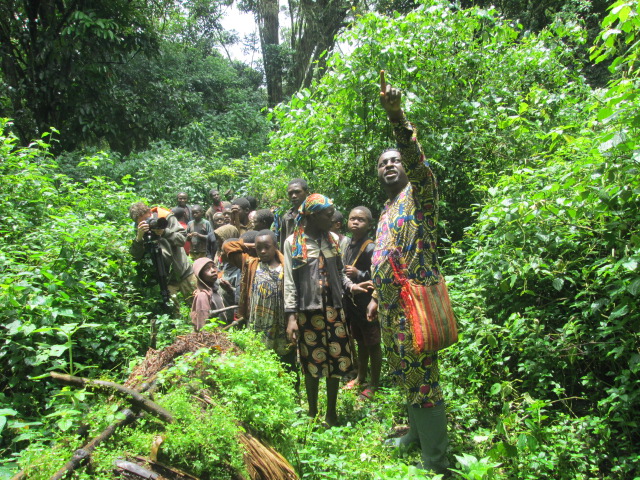

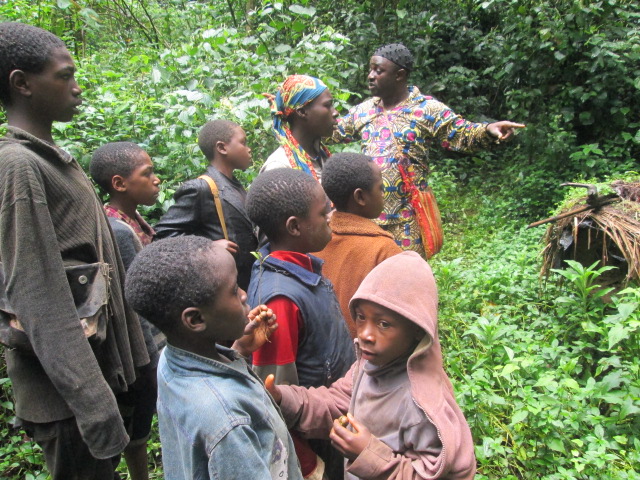
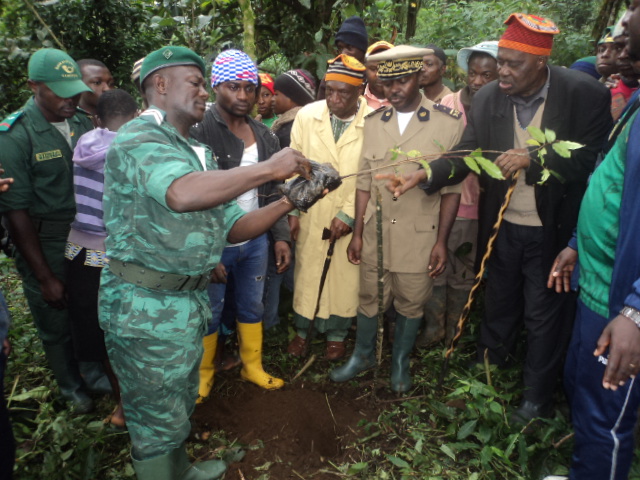
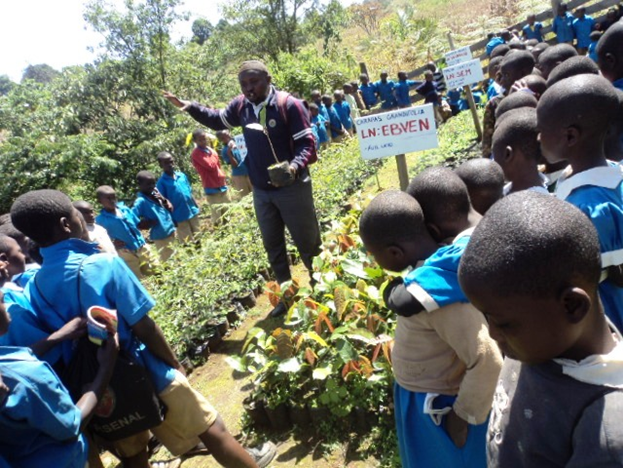
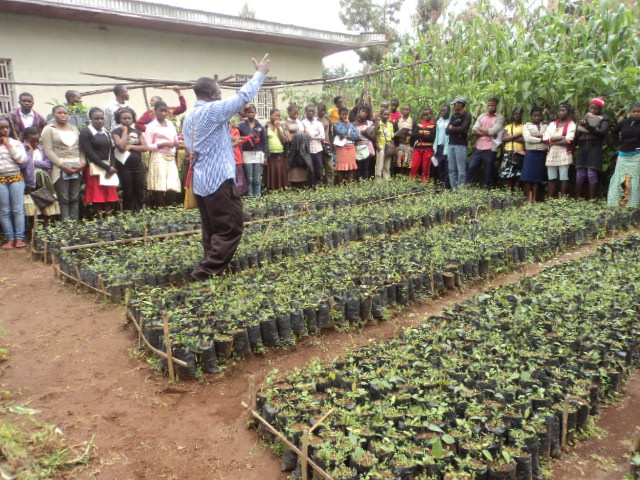
La regeneración del bosque de Kilum-Ijim desempeña un papel vital en la protección de las cuencas hidrográficas, la promoción de la biodiversidad, la prevención del endemismo (rata del monte Oku y turaco de Bannerman) y la apicultura, el mantenimiento de los medios de subsistencia y la lucha contra el cambio climático. La acción de CAMGEW en la regeneración de este bosque sirve a un interés local, nacional y mundial. En julio de 2017, CAMGEW había plantado 70.000 árboles autóctonos amantes de las abejas en el bosque de Kilum-Ijim, en una superficie de 172 hectáreas, y formado a más de 2.500 miembros de la comunidad en la plantación de árboles. Gracias a estos árboles, las comunidades producen más miel blanca de Oku de este bosque. Las actividades de regeneración del bosque incluyen reuniones de planificación con los líderes forestales y las comunidades; la identificación de los lugares de regeneración; la limpieza de caminos para la plantación por parte de los hombres; el picoteo y la excavación de hoyos por parte de los jóvenes; el transporte de los árboles al bosque por parte de las mujeres y la plantación adecuada de los árboles en los bosques por parte de expertos de la comunidad. Durante esta actividad, los miembros de la comunidad aprenden sobre la plantación de árboles y los tipos de árboles. La plantación de árboles termina con una ceremonia inclusiva en la que presentamos el trabajo realizado a las autoridades y aprovechamos la oportunidad para sensibilizar sobre los bosques. Se plantan más de 15 variedades de árboles mediante plantones y esquejes, como Prunus africana, Nuxia congesta, Schefflera abyssinica, Newtonia camerunensis,
El proyecto es integrador, con la participación de todas las personas de la comunidad. Tenemos a partes interesadas del bosque, mujeres, jóvenes y hombres juntos realizando diversas tareas.
La solidaridad de la comunidad ha aumentado a medida que aprenden a trabajar juntos y sus autoridades les aprecian y les apoyan en sus actividades.
La sensibilización forestal durante la plantación y el aprendizaje práctico de la plantación de árboles ha aumentado el compromiso de la comunidad con la protección y la valoración del bosque.
Los programas semanales de radio comunitaria han ayudado a la comunidad a entender su bosque.
La comunidad tiene conocimientos autóctonos sobre el bosque y cuando se reúne a los miembros de la comunidad aprenden mejor entre ellos y el CAMGEW también aprende de ellos.
Los miembros de la comunidad necesitan formación sobre el terreno, como aprender haciendo en el bosque, y el CAMGEW se sorprendió de que muchos de ellos volvieran a montar pequeños viveros individuales y plantaran árboles de vivero en el bosque por su cuenta, lo que demuestra que entienden por qué hay que proteger el bosque.
En la plantación de árboles participan diversos usuarios del bosque con distintos intereses: Los apicultores quieren tener muchos árboles amantes de las abejas, los cazadores de ratas quieren tener muchos árboles que den semillas a las ratas, las autoridades de los planes hidrológicos comunitarios quieren proteger las cuencas hidrográficas para tener más agua, el ayuntamiento y el gobierno quieren proteger el patrimonio forestal, los pueblos tradicionales quieren proteger los sitios culturales, las instituciones de gestión forestal quieren que se planten árboles económicos para generar ingresos
Una institución sólo puede ganarse la aceptación de la comunidad cuando se instala en ella y participa en su vida cotidiana (en los buenos y en los malos momentos).